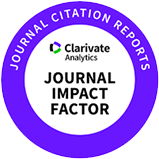Lipidomics-based analysis of the effects of different feeding regimes on the fatty acid composition in the longissimus dorsi muscle of Tibetan sheep
Abstract
Sheep meat is consumed in various cultures worldwide, with lipids contributing to different attributes, including appearance, color, flavor, and tenderness. However, the impacts of various feeding systems on fatty acid (FA) composition within sheep meat are not well elucidated. Hence, this study was aimed at elucidating the impacts of different feeding regimes—grazing (G), semi-grazing (SG), and stall feeding (SF) systems—on FA composition in the <italic>longissimus dorsi</italic> muscle (LDM) of Tibetan sheep by analyzing lipid profile and related pathways through untargeted lipidomics. Notably, LDMs of lambs under G and SG systems exhibited higher beneficial n-3 polyunsaturated FAs (PUFA) contents and more favorable n-6/n-3 and PUFA/saturated FA ratios than LDMs of lambs under the SF system. Furthermore, 16 lipids closely associated with significant FAs were further analyzed. Notably, C18:3n3 and c9t11-conjugated linoleic acid showed positive relation to ceramide (d18:1/25:0), and C20:5n3 positively correlated with phosphatidylcholine (16:0/14:0), phosphatidylserine (18:0/22:6), and sphingomyelin (d18:1/18:0) (<italic>P</italic> < 0.05). According to Kyoto Encyclopedia of Genes and Genomes analysis, n-3 essential FAs were closely linked to sphingolipids, glycerophospholipids, linoleic acid, glycerolipids, and alpha-linolenic acid metabolisms. Altogether, the findings in this study highlight the metabolic mechanisms underlying diet-mediated changes in the FA compositions of LDM and identify specific lipid biomarkers associated with essential FAs, suggesting their potential in future studies and practical applications in the meat production industry.
















